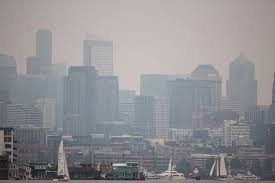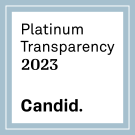4 Ways Climate Change and Affordable Housing are Connected
Looking out your window this morning, you might have assumed today was just another typical gray, cloudy Seattle day. It’s not until you walk outside and you are hit with the pungent smell of smoke and hot muggy air rather than the crisp chill you were expecting that you know there is something very atypical going on. The world is warming, natural disasters are becoming common place, and climate change is undeniable.
Between the air quality alerts and electeds leveraging this to pass much needed legislation, the conversation on climate change is on the front of everyone’s mind. Often these conversations take a turn of looking at this problem through the environmental lens alone. We know that none of our social problems exist in a bubble and the whole team of our passionate housing and environmental advocates must work to see each other as allies. Addressing the urgent concerns of our environment can be done in concert with affordable housing, so here are four ways climate change and affordable housing solutions are connected.
- Transit Oriented Development: Shorter Commutes, Smaller Emissions

Transit Oriented Development (TOD) is a development strategy of building affordable housing near high capacity transit centers such as the new light rail stations. This allows low-income residents to decrease their transportation costs as they are continually priced out of the cities where their jobs are concentrated. The overarching goal of TOD is to provide housing and transportation choices that give residents access to homes, jobs, recreation opportunities allowing for less dependency on a motor vehicle and shorter commutes leveraging public transit. Instead of driving for most trips, people can more easily walk, bike, or take transit in a city thus reducing greenhouse gas emissions. This way people are able to save money, save the environment, and save their time. It’s a win-win. - Denser Cities Leads to Less Sprawl
“Density done right” is a strategy for building the city inwardly, while combatting the tendency for cities to spread out and claim valuable land. This strategy integrates land use, transportation, and housing policies to foster vibrant and safe mixed-use communities where residents, employees, and visitors can walk, bicycle, or take transit to reach their destinations. This way cities can continue to grow in a manner that is healthy for both people and the planet. By supporting policies in our city such as zoning changes, we can make it easier to produce more housing options across the income spectrum and enable people to find affordable housing without having a long commute. This helps cities grow without contributing to polluting sprawl and protects our wild spaces from further development. - Environmentally Sound Buildings: Sounds like Saving Money on Utilities

When developers and designers are starting their affordable projects, they are challenged by the added costs of “deep green” construction. However, through the partnerships of environmental groups and housing developers, new sustainability initiatives are allowing developers to build green without a huge financial burden. These initiatives emphasize energy efficiency and reduce the need for heating and cooling systems. This allows for environmentally cognizant development that in the end also saves residents utilities costs because their energy and water consumption is reduced. Check out how this works in practice. - Who it impacts?
When we talk about who bears the biggest burden from climate change and from our housing shortage, the answer is people with lower incomes and people of color. These problems compound and together leave the most vulnerable and the least culpable with the lion’s share of the problem.
As we continue the vitally important conversations on environmental justice and affordable  housing, we must seek solutions that advance all aspects of a vibrant community. Check out HDC’s Housing and the Environment page to learn more about the intersection of the two issues and tweet at us with how you see environmental justice and affordable housing working together!
housing, we must seek solutions that advance all aspects of a vibrant community. Check out HDC’s Housing and the Environment page to learn more about the intersection of the two issues and tweet at us with how you see environmental justice and affordable housing working together!
Links:
https://www.epa.gov/smartgrowth/smart-growth-and-affordable-housing
http://emeraldcities.org/cities/seattle
http://uli.org/wp-content/uploads/2012/07/Report-7-Environmentally-Sustainable-Affordable-Housing.ashx_.pdf
https://www.housingconsortium.org/sustainable-building-initiatives/
http://vault.sierraclub.org/sprawl/affordable.pdf
https://www.planetizen.com/node/65288
http://www.hcd.ca.gov/policy-research/specific-policy-areas/housing-climate-change.shtml
https://www.sacbee.com/opinion/op-ed/soapbox/article159746774.html
https://www.huduser.gov/portal/pdredge/pdr_edge_hudpartrpt_120111_1.html



